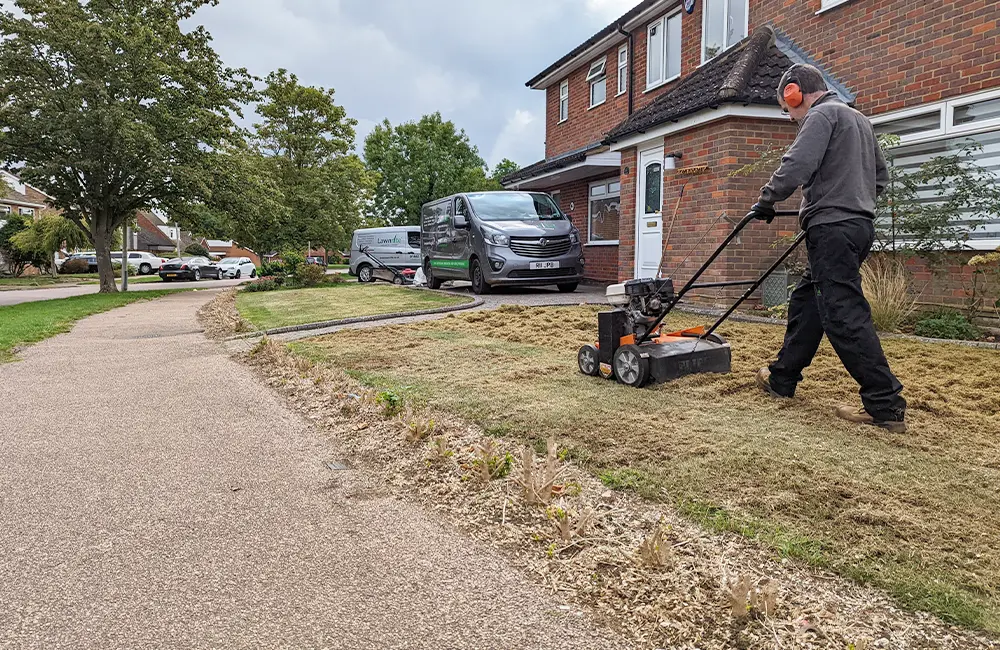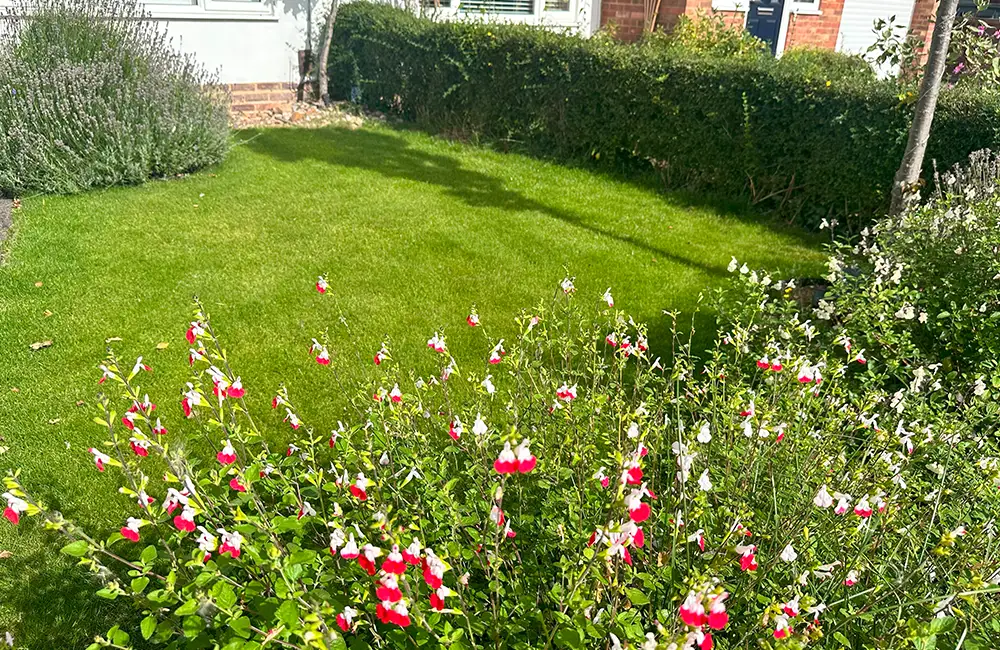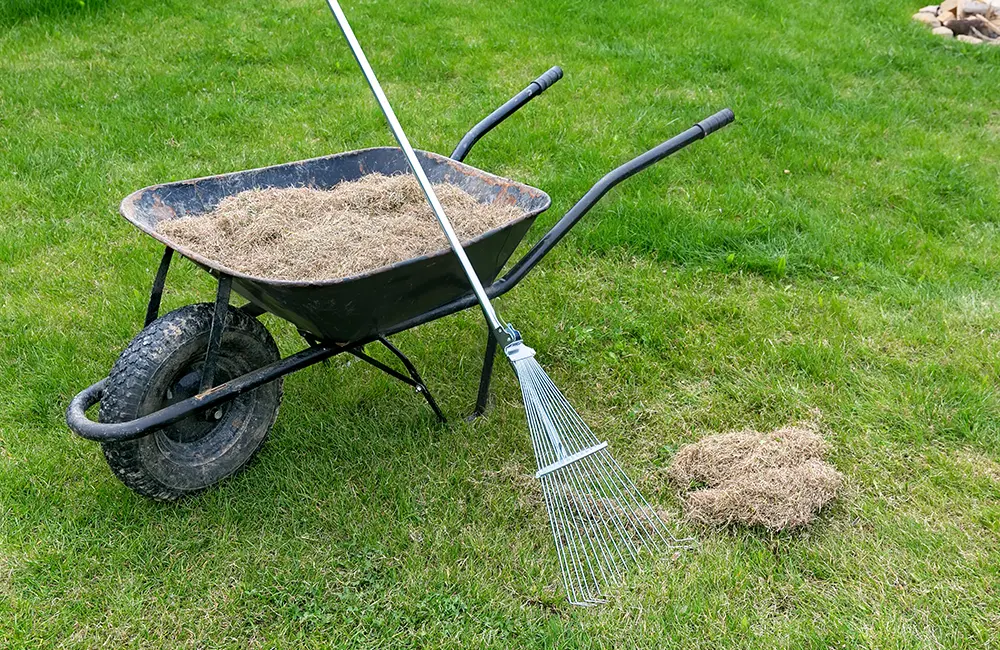- Hertfordshire, Bedfordshire and South Cambs
Thatch refers to the brown material found beneath the green grass blades. A small amount of thatch is beneficial, but excessive buildup can hinder new grass growth, block water and nutrients from reaching the roots, and encourage moss formation.
Scarification involves removing this dead thatch, allowing your lawn to breathe and thrive.


Scarifying opens up the lawn’s surface, promoting better airflow to the soil and roots.
Enhanced airflow helps maintain a healthier lawn by preventing thatch accumulation.
By breaking up compacted soil, scarification allows water to penetrate deeper.
Adequate water absorption is crucial for strong root development and lush grass.
Scarification improves the soil’s condition, enabling the grass to absorb more nutrients.
Nutrient-rich soil supports robust grass growth and overall lawn health.


Ideally, scarify your lawn in spring or early autumn (well ahead of the first frosts), approximately once a year, to keep it in good shape.
For new lawns, wait at least a year before scarifying to avoid damaging the turf.
Send us a message or give us a call to learn more about our services or to request a free quotation.
Help us to grow our business my letting us know how we did.


